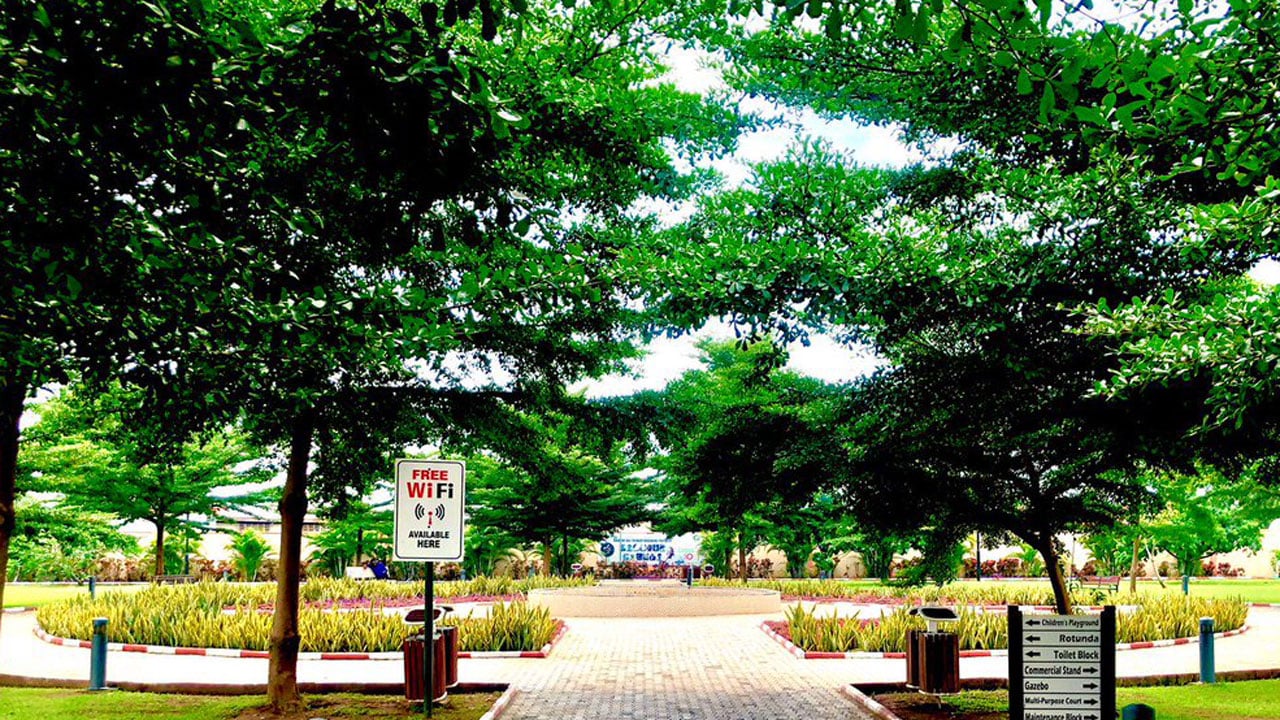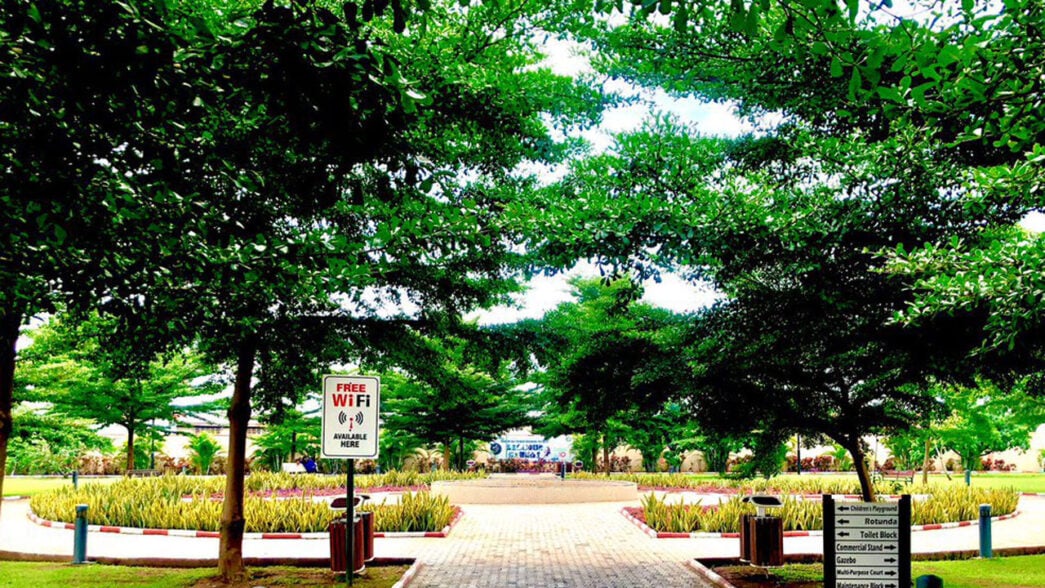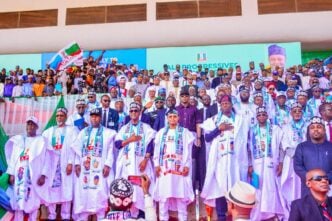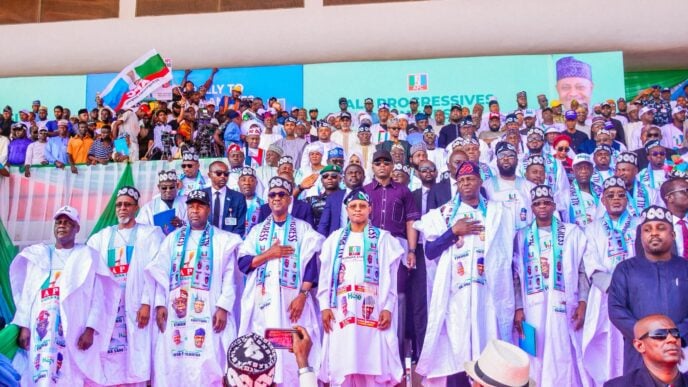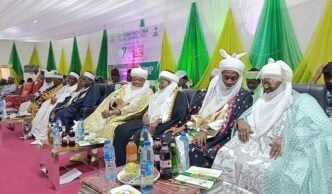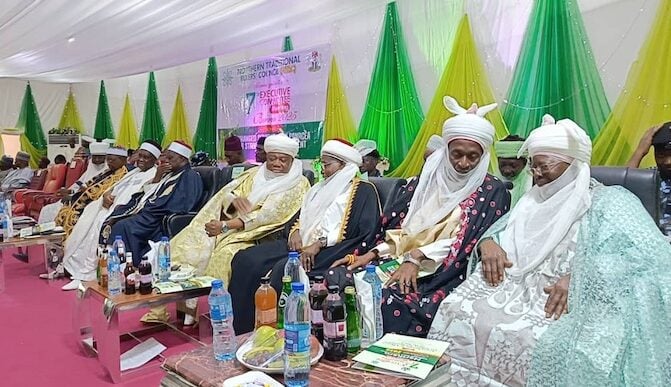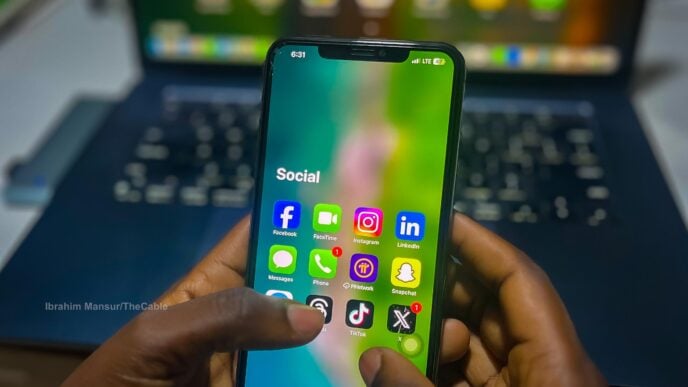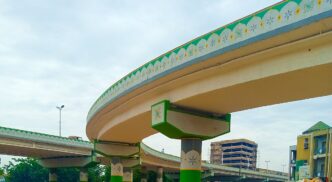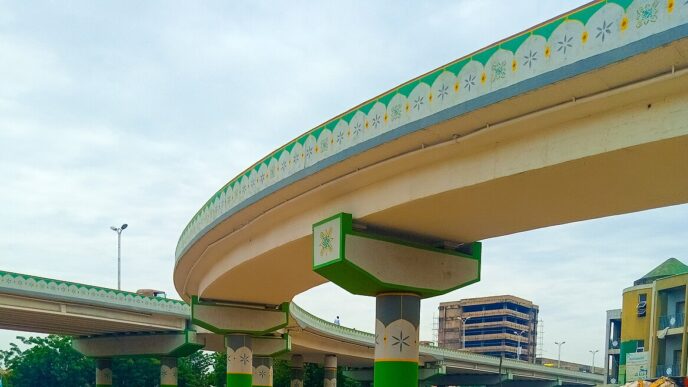BY GBENGA ONABANJO
Walk through Lagos with open eyes and you will see clearly a thousand scars of shame, signs of silence, and symbols of neglect. A median once protected by wire mesh—now vandalised, the relics sticking out like bones. Weeds are growing on the concrete beds and the asphalt surface. Big stumps of streetlight bases jutting dangerously on the roadside—silent accidents waiting to happen. Under-bridges littered with refuse, turned into hiding places for criminals. Curbs broken, sidewalks muddy, drains clogged, medians weedy.
We pass them daily, but our senses have grown numb. Dysfunction has become our default—decay, disorder, and disregard now define our daily view. Neglect has suddenly become the norm. Nobody cares a hoot. Authorities drive by, indifferent. Citizens adjust, indifferent. Yet every broken piece is a symbol of our decay.
“Neglect has suddenly become the norm.”
Advertisement
A Silent Crusade, A Needed Revolution
Lagos in Bloom is not only about planting trees and flowers. It is about waking us up from our collective numbness. It is a crusade of repair, responsibility, restoration—and a rebellion against rot.
It is saying:
Advertisement
- Fix what is broken.
- Remove what is dangerous.
- Restore what is disfigured.
- Protect what is planted.
- Maintain what exists.
- Demand durability from what is installed.
This is how to Make Over Lagos—not with grand speeches, but with small, steady acts of order and care in every square meter of our city.
When Lagos Dared to Look Beautiful
We saw a glimpse of this under a former Governor. His visit to Singapore inspired a wave of greening and beautification: medians landscaped, trees planted, and roundabouts glowing with life. Lagos looked different. Lagos looked proud. Lagos looked healthy.
But neglect crept in. Maintenance vanished. What was once green became grey again. The wonder faded. Yet the lesson remains: Lagos can bloom. We have done it before. We can do it again.
Advertisement
“Lagos can bloom again—if we refuse indifference.”
Why This Matters
Greening and repair are not about cosmetics. They are about:
- Safety: A broken base, a clogged canal, a missing manhole—each a menace that maims.
- Order: Crosswalks, sidewalks, and greenery channel pedestrians safely, instead of letting people wander like misdirected animals across highways.
- Health: Trees cool the air, shrubs trap dust, clean drains prevent disease.
- Economy: A well-kept street attracts business, lifts property values, and restores dignity.
- Durability: Minimum specifications for public furniture—like the benches, bollards, railings, and light poles you see in London—mean infrastructure can withstand impact, weather, and wear. Lagos must insist on this standard.
- Maintenance Culture: Maintenance is not magic. Maintenance is a matter of mending and maintaining a schedule of repair. Without it, even the best plans fail.
- Civic Pride: Every repaired curb, every green median, every working lamp says: we care.
“Maintenance is a matter of mending and maintaining a schedule of repair.”
Advertisement
Drains and Walkways — Foundations of Order
Perhaps the most glaring eyesore across Lagos is our drains and pedestrian walkways. Open drains have become breeding grounds for weeds and near-forests. Covered drains that should serve as safe walkways often have slabs that don’t sit square, many broken, others dangerously narrow—fit for one person at a time.
Advertisement
Worse still, they exclude those in wheelchairs, children in strollers, and the elderly, because ramps are missing. Drains and walkways are the very foundation of an orderly city. Until they are fixed, widened, and made accessible, we cannot claim order.
“To Make Over Lagos is to rebuild the basics—safe drains, safe walkways, and accessible paths.”
Advertisement
What Must Be Done (No Excuses)
- Authorities: Replace vandalised meshes with durable and functional ones. Remove dangerous stumps. Paint and repair curbs. Wash streets as you water trees. Demand durable public furniture. Repair or replace every knocked-down streetlight pole. Replace burnt bulbs. Every square meter of space counts.
- Water Corporation: Use tankers to water young trees while washing filthy streets. Make watering double as cleansing.
- Communities: Treat young trees like infants—stake them, guard them, nurture them until they are strong.
- Citizens: Refuse indifference. Report broken infrastructure. Protect what is planted. Adopt a strip of frontage. Maintain it as if it were your own yard.
Who is Responsible?
Advertisement
One reason for our decay is the confusion of responsibility. Is it the state government? The local government? Or an agency?
Local government councils should maintain sidewalks, drains, medians, and neighbourhood roads.
State agencies (LAMATA, LAWMA, LASPARK, LASURA, Ministry of Works & Infrastructure, Ministry of Environment) should maintain transit corridors, major highways, bus stations, and bridges.
Private sector and communities should adopt and care for their immediate frontage, reporting damage promptly.
Clarity is everything. Where responsibility is shared, neglect thrives. Lagos must draw the line clearly and demand accountability from each tier.
A 90-Day Challenge for Lagos
If each Local Government Area chose just two streets and applied this principle—repair, green, maintain, and upgrade furniture with durability—the transformation would be visible in 90 days:
- No relics of rot on medians.
- No refuse rotting under bridges.
- No reckless stumps by the roadside.
- Safe, accessible walkways and repaired drain covers.
- Durable street furniture, not disposable fittings.
- Crosswalks and sidewalks restored to dignity, guiding pedestrian flow.
- Trees standing tall, streets washed clean, drains flowing.
A Lagos that looks cared for, not abandoned.
“This is not a loud campaign. It is a silent revolution.”
Make Over Lagos, One Meter at a Time
Every broken mesh, every clogged channel, every weed-choked walkway is an insult to our dignity. And every repair, every plant, every clean median is a statement of pride.
Lagos in Bloom is therefore not just about turning grey to green. It is about reawakening our senses to what we have ignored. It is about responsibility—for safety, for order, for durability, for maintenance, for accessibility, for beauty, for life.
If we embrace this, Make Over Lagos will not just be a day in time, but a way of life. The future of Lagos is written not in the skyscrapers we build, but in how we care for the smallest square meter of space.
Lagos can bloom again—if we refuse indifference…. Yes, it will!
In the next article, we will consider…
Lagos in Bloom II – From Grey to Green: The Template
In that piece, we will share practical steps on what to plant, where to plant, and how to sustain it—from tree choices to green walls, rooftop gardens, and specific corridors and neighbourhoods where Lagos can bloom.
This week is about awakening our conscience. Next week is about putting hands to work. Stay tuned.
Onabanjo, an architect, environmentalist and urban policy advocate, is the founder of GO-FORTE FOUNDATION – an NGO for the restoration of the environment.
Views expressed by contributors are strictly personal and not of TheCable.
